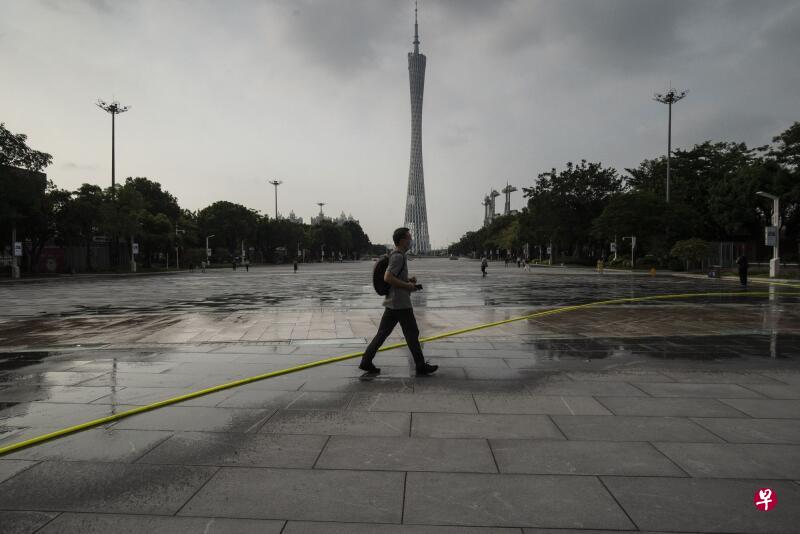
People familiar with the matter revealed that Chinese officials are considering taking measures, cautiously relaxing the long -lasting "dynamic clearance" polls and restarting to the outside world. However, Chinese officials have not set a timetable for this, and the process is quite slow.
According to the Wall Street Journal on Monday (November 7), people familiar with the matter reported that although the impact of crown disease prevention and control measures is getting deeper and deeper, Chinese officials are still acting with caution.China wants to return to the state before the crown disease, and there is still a long way to go, and this timetable may be close to some time at the end of next year.
People familiar with the matter said that Beijing has made some progress in relaxing the quarantine measures of inbound passengers.According to reports, Chinese officials may further reduce the number of quarantine days of immigration passengers early next year, from the current 10 -day quarantine time requirements to seven days.Passengers who currently enter China need to be separated for seven days in specified isolation places and implement three -day home health monitoring.
In terms of domestic epidemic prevention restrictions, Chinese officials have notified retail companies to gradually reduce the frequency of nucleic acid detection as soon as this month, partly because the cost of large -scale nucleic acid detection is too high; based on cost issues, the Chinese government also plans to reduce it at the issue of cost issues.Thousands of nucleic acid detection stations established nationwide.
One of the people familiar with the matter said that China's opening up may be carried out in an orderly way, which is different from the relaxation method of Western countries.Chinese officials may gradually relax the relevant restrictions in accordance with the geographical area, for example, it may take the lead in appropriately relaxing some epidemic prevention restrictions in cities in some major commercial centers.
However, people familiar with the matter said that the Chinese leadership found that it is difficult to formulate broader relaxation measures during this year because the construction of new variants, insufficient construction of public health systems, and the upcoming winter may cause them to cause them to cause them to cause them, which may cause resulting in the coming winter.The number of people who were admitted to the hospital for crown disease and the surge in the number of deaths, which led to the turmoil of society and threatened the governance of Chinese leadership.Therefore, in the short term, many existing epidemic prevention restrictions will be retained, and Chinese officials will still actively prevent the outbreak of even small -scale epidemic through large -scale testing and sealing.
People familiar with the matter revealed that Chinese health units have been monitoring the crowning mortality rate of Hong Kong, Japan, and South Korea and the public's attitude towards crown disease, because these areas have similar cultural origins with mainland China, and governments in these regions are also in these regions.It was not until recently that the restrictions on epidemic prevention were gradually relaxed.
In addition, one of the people familiar with the matter said that Chinese officials have been closely related to the World Health Organization (WHO) in recent months to pay attention to whether WHO will reduce the popularity of crown diseases.Because WHO's reduction in the popularity of crown diseases will help the Chinese government more actively promote the loosening of epidemic prevention restrictions, and adjust the official discussion of the crown disease epidemic, and announce the victory of China's prevention and control.
The person said that Beijing's current consideration is that after the alert level of WHO to reduce crown disease, the Chinese government can treat crown diseases with the prevention of Class B infectious diseases.Although the Chinese government is currently incorporated into the level of Class B infectious diseases, it takes the prevention and control measures of Class A infectious diseases.
However, some people familiar with the matter believe that even if there is the above adjustment, China may still take longer to return to the level before the popularity, and this transition time may last for one year.Chinese officials still hope to continue to closely monitor new variants to ensure that they will not become more dangerous.
At present, the vaccination rate of the elderly in China is the consideration of Chinese official decision to further relax the restrictions on the prevention and epidemic prevention of crown disease.Some insiders say Beijing is planning to launch a vaccination movement for the disadvantaged group later this year, with the goal of allowing 95%of people of 60 or more people to receive two -dose vaccine.The latest data in early November shows that 86%of the elderly population have vaccinated two doses of vaccines.
In addition, another consideration of the Chinese government is to obtain oral antiviral drugs to treat crown disease.China Pharmaceutical Regulatory Department has approved Paxlovid drugs of Pfizer this year to treat crown disease.
Recently, Chinese officials are considering the further relaxation of strict "dynamic clearing" epidemic prevention restrictions, and is formulating a melting mechanism to relax international flight entry in China, which has driven the performance of land stocks in New York, Hong Kong, and Shanghai.However, officials of the China Health and Health Commission emphasized on Saturday that they insisted on "dynamic clearance".
Chinese officials and the outside world have different signals. After the international oil prices rose to a two -month high, they fell on Monday.According to Reuters, Brent crude oil futures fell 0.65 US dollars (S $ 0.91) to close at $ 97.92 per barrel.Essence
The medium crude crude oil in West Dharsus fell at $ 0.82 and closed at $ 91.79.Earlier, the price of the crude oil rose 0.74 US dollars to a medium high of $ 93.74 per barrel, the highest since August 30.


